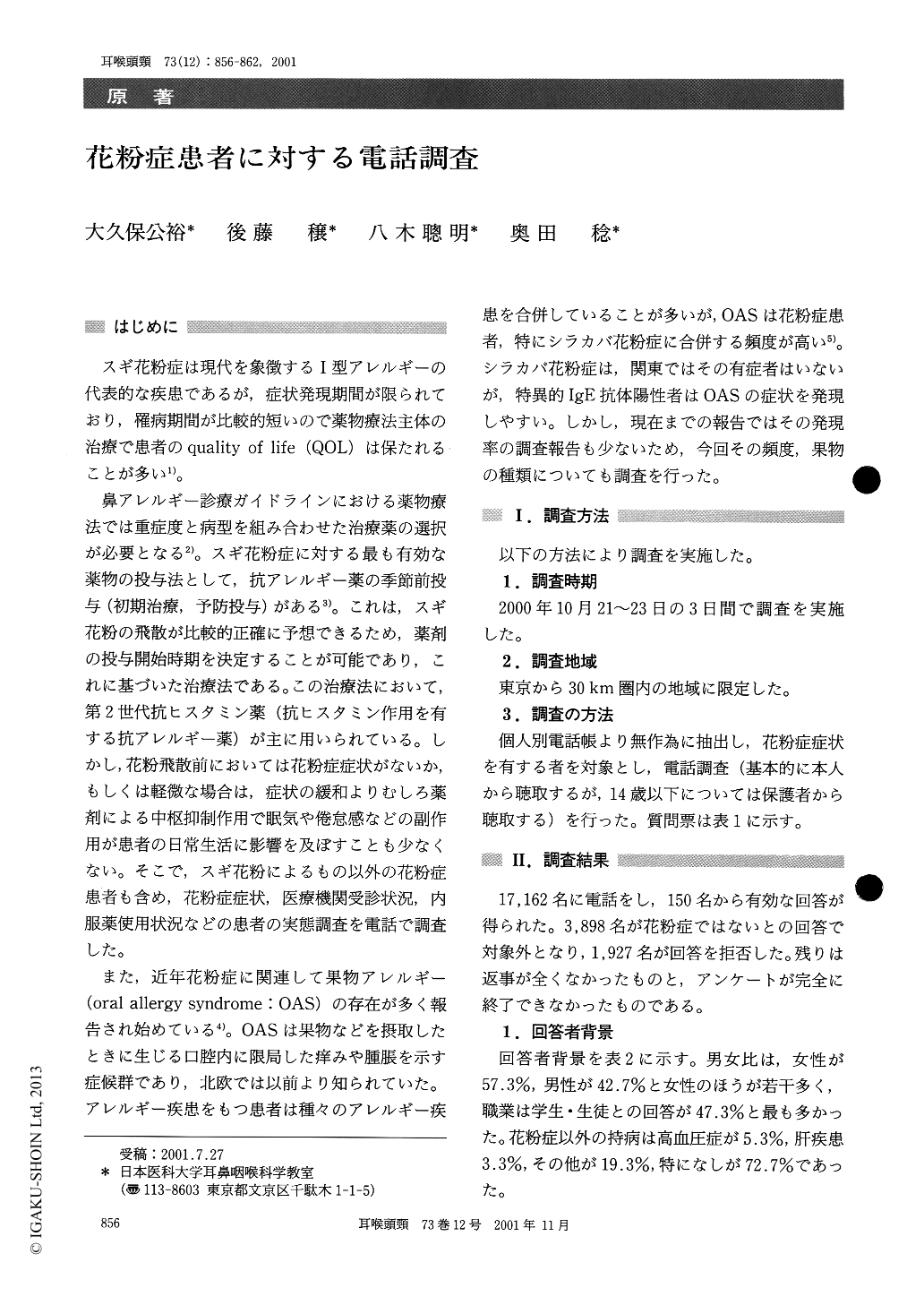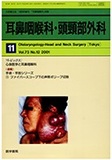Japanese
English
- 有料閲覧
- Abstract 文献概要
- 1ページ目 Look Inside
はじめに
スギ花粉症は現代を象徴するI型アレルギーの代表的な疾患であるが,症状発現期間が限られており,罹病期間が比較的短いので薬物療法主体の治療で患者のquality of life (QOL)は保たれることが多い1)。
鼻アレルギー診療ガイドラインにおける薬物療法では重症度と病型を組み合わせた治療薬の選択が必要となる2)。スギ花粉症に対する最も有効な薬物の投与法として,抗アレルギー薬の季節前投与(初期治療,予防投与)がある3)。これは,スギ花粉の飛散が比較的正確に予想できるため,薬剤の投与開始時期を決定することが可能であり,これに基づいた治療法である。この治療法において,第2世代抗ヒスタミン薬(抗ヒスタミン作用を有する抗アレルギー薬)が主に用いられている。しかし,花粉飛散前においては花粉症症状がないか,もしくは軽微な場合は,症状の緩和よりむしろ薬剤による中枢抑制作用で眠気や倦怠感などの副作用が患者の日常生活に影響を及ぼすことも少なくない。そこで,スギ花粉によるもの以外の花粉症患者も含め,花粉症症状,医療機関受診状況,内服薬使用状況などの患者の実態調査を電話で調査した。
150 patients with pollinosis were surveyed by questionnaire on the telephone. Main symptoms with pollinosis were sneezing, nasal discharge, nasal obstruction, and eye itching. Most severe symptomwas nasal discharge or eye itching with almost same percentage. The frequency of clinic visit was 55% of all patients. Highest ratio of clinic visit of the patients' age was under 9 years. The major side effects of medications were tendency to sleep, 47%, and oral dryness, 35%. The incidence of oral allergy syndrome in these patients was 10.7%. These results indicated that the decrease of quality of life in pollinosis results in the disease itself and associat-ed symptoms, and side effects of the treatments.

Copyright © 2001, Igaku-Shoin Ltd. All rights reserved.


